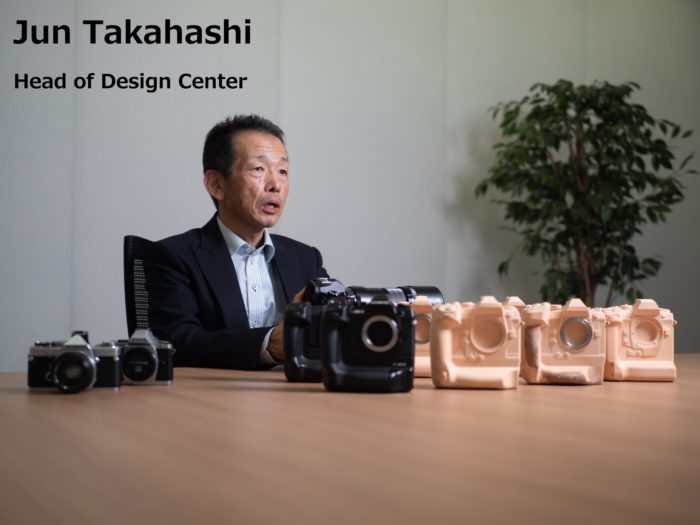Interview with Jun Takahashi, Head of Design Center at Olympus

Olympus shared this interview made with Jun Takahashi, Head of Design Center at Olympus:
Our design concept at Olympus is simple – the coexistence of compactness and easy operation. This is a tradition at Olympus, something we have maintained since the era of film cameras such as the OM series.
The OM-1 is a film camera that became all the rage when it was released back in 1972, and the OM-D E-M5 is a Micro Four Thirds camera with a built-in EVF released in 2012. When these two models are compared side by side, the latter is a little smaller but the distance from the lens center to the shutter release button on both cameras is identical. What this means is that even though it is smaller, the OM-D E-M5 does not suffer from any loss of operability.
The more recently released OM-D E-M1 and OM-D E-M1 Mark II were designed to be even easier to hold and to ensure a stable, secure grip even when a larger lens was mounted.
The biggest advantage of the compact size and light weight is exemplified by the telephoto lenses. Following the release of the M.Zuiko Digital ED 300mm f/4.0 IS PRO in 2016, the line of telephoto lenses has continued to expand.
The original concept for the OM-D E-M1X was to create the optimum body design for mounting a telephoto lens. Professional photographers frequently switch between holding the camera horizontally and holding it vertically. Thinking about the optimum body for such applications made it possible for us to work out what the right size of the E-M1X should be and how to design the integrated vertical positioning grip. In the design process, we manufactured a large number of models using chemical wood to adjust the shape little by little until we got it just right.Thinking about the optimum body for such applications made it possible for us to work out what the right size of the E-M1X should be and how to design the integrated vertical positioning grip. In the design process, we manufactured a large number of models using chemical wood to adjust the shape little by little until we got it just right.
Initially, our idea was to create the best grip for the horizontal position and then to provide the same type of grip for the vertical position. We quickly found out that, although this design felt comfortable, it posed balance problems – for example, when the body is mounted on a tripod. So we had to manufacture dozens of chemical wood models to find the right balance.
In-depth reviews were also carried to determine the optimum types and placement of buttons. For example, the “Exposure”, “ISO” and “Movie” buttons are arranged in a row where they can easily be reached by the right index finger. The heights of these buttons are varied to prevent the wrong one from being pressed and the ISO button also has a projection on top to make it easier to identify. These are some of the things we took into consideration to ensure error-free operation – even when a professional has to shoot pictures in dark (during stage photography, for example).
The control dials are embedded to reduce the possibility of damage and minimize the chance of breakage even if the camera is dropped. By concentrating on the smallest details of the design, we were able to create a camera that is incredibly easy to use and extremely tough
Note: Interview released before the BAD news of the Imaging Business sale :(

